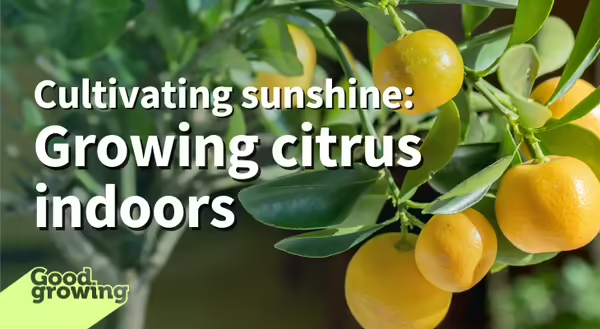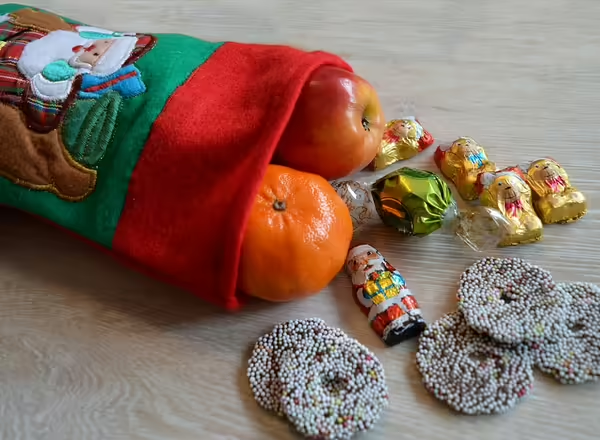
As we hunker down for winter, some of us may begin longing for summer’s warm, sunny days. Perhaps it’s the cold weather or the desire to return to gardening. Whatever the reason, there are plenty of opportunities to continue our gardens indoors. While we often associate citrus with warmer climates (and possibly Christmas stockings), it is possible to grow citrus in Illinois at home as a houseplant.
Citrus is native to southeast Asia and has been cultivated for over 4,000 years. Over the centuries, citrus has spread throughout the world, including North America, with early Spanish explorers. While there are dozens of citrus species, most modern-day citrus can be traced back to three species: mandarins (Citrus reticulata), pomelos (C. maxima), and citrons (C. medica). Citrus species will readily cross with one another, which has led to the numerous types of citrus we are familiar with today, like lemons, limes, grapefruits, and oranges.
What types of citrus do best as a houseplant?
Not all citrus is created equally when it comes to growing indoors. Citrus requires hot temperatures to produce sugars, which can be difficult to get if you are growing plants indoors for several months of the year. This is especially true of citrus, which produce sweeter fruits like oranges. Citrus with sour fruit, like limes and lemons, require less heat to ripen and are a better option for growing indoors.
Citrus plants are trees that will commonly grow over 20 feet tall, which is not very practical for most people growing indoors. So, when purchasing, look for dwarf cultivars or those grafted onto dwarfing rootstock. These trees will often only grow 3 to 5 feet tall and are usually intended to be grown in pots. While you can plant your own citrus seeds, it will take many years for them to produce fruit, and they will likely get too large to be grown indoors.
Growing citrus as a houseplant
Citrus plants require sunny conditions and should be given at least 6 hours of direct sunlight daily. Ideally, plants should receive 8-12 hours of light, especially if you want fruit, so supplemental lighting will be helpful or even necessary.
Citrus should be grown in an acidic, well-drained potting medium like a cactus/citrus potting mix. ‘Regular’ potting mix can be amended with perlite, pumice, etc. to increase drainage. Citrus are considered heavy feeders, especially for nitrogen. Specialized citrus/avocado fertilizers are available, but fertilizers with at least a 2-1-1 ratio can also be used. Plants should be fertilized while actively growing (April through September).
Citrus likes moist but not wet soil. Allow the top of the soil to dry out in between waterings. When selecting a pot, make sure it has drainage holes to prevent growing media from becoming waterlogged. Citrus also like more humid conditions than we typically have indoors during winter. Running a humidifier or grouping plants together can help increase humidity.
In the spring, once low temperatures are consistently above 50°F, citrus trees can be moved outdoors. Like other houseplants, slowly expose them to longer periods of sunlight to avoid sunburn. Plants should be moved back indoors in the fall before temperatures drop into the 40°Fs.

Getting citrus to fruit
Most citrus trees will produce fragrant white flowers in late winter or spring (some, like lemons and limes, may produce flowers from spring to fall). Because trees are likely to be indoors while they are blooming (no pollinators), pollinating plants by hand can increase the chances of fruit production. This can be done by using a small paintbrush or cotton swab.
Potted citrus plants frequently produce more fruit than the plant can support. So don’t be alarmed when plants begin dropping excess fruit (sometimes up to 75% of fruit). Fruit drop can also be caused by sudden temperature changes (avoiding drafty areas can help avoid this).
Patience is the name of the game when it comes to getting fruit off citrus plants. It may take young plants a few years to flower and produce fruit. Additionally, citrus fruit can take a long time to ripen. Lemons and limes can take six to nine months to ripen, while oranges can take nearly a year or more. Providing sufficient light and warm temperatures is essential to fruit production.

Why oranges at Christmas time?
For some people, oranges are an annual appearance in their Christmas stockings, which, admittedly, were usually the least exciting thing to come out of the stocking. This tradition dates back to the 19th century. Putting oranges in stockings may have come from the legend of St. Nicholas.
He is said to have heard of three sisters who could not get married because they didn’t have a dowry (property or money a bride brings to her husband for their marriage). To help them, he dropped golden balls (or bags of coins) down the chimney, and they landed in stockings that were drying by the fire. Nowadays, we put oranges in stockings to represent that gold.
Another potential reason is that oranges used to be very expensive and were considered a rare delicacy. Because of their cost, they were considered luxury items to the average person and were often given as gifts on special occasions, such as Christmas.
If you’re desperate for a last-minute stocking stuffer, head to the kitchen and grab an orange. When the recipient complains, you can regale them in the history of this tradition, and if they’re anything like me when I was a kid, they will likely quickly regret doing so.
Good Growing Fact of the Week: The fruit of citrus is a hesperidium, which is a specialized type of berry with a leathery rind.
Bonus Fact of the Week: Color is a poor indication of fruit maturity in citrus. Citrus often does not become sweet until after their rinds have developed color. Taste is the only sure way to determine if the fruit is mature and ready to harvest. Lemons and limes are an exception. Since we grow lemons and limes for their acid flavor, not their sweetness, they can be used once they have reached full size.
Photo Credits
Citrus flower: Ken Johnson, Univeristy of Illinois Extension
Christmas stocking: Frauke Riether, Pixabay
Sign up for our emails! Want to get notified when new Good Growing posts are available? SIGN ME UP
Give us feedback! How helpful was this information (click one): Very helpful | Somewhat helpful | Not very helpful
MEET THE AUTHOR
Ken Johnson is a Horticulture Educator with University of Illinois Extension, serving Calhoun, Cass, Greene, Morgan, and Scott counties since 2013. Ken provides horticulture programming with an emphasis on fruit and vegetable production, pest management, and beneficial insects. Through his programming, he aims to increase backyard food production and foster a greater appreciation of insects.